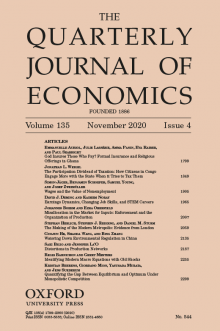In this article for the Quarterly Journal of Economics, co-authors Stephan Heblich, Stephen Redding, and Daniel Sturm use newly constructed spatially disaggregated data for London from 1801 to 1921 to argue that the invention of the steam railway led to the first large-scale separation of workplace and residence. The authors also argue that a class of quantitative urban models is remarkably successful in explaining this reorganization of economic activity, structurally estimating one of the models in this class and find substantial agglomeration forces in both production and residence. In counterfactuals, the paper finds that removing the whole railway network reduces the population and the value of land and buildings in London by up to 51.5% and 53.3% respectively, and decreases net commuting into the historical center of London by more than 300,000 workers.
Articles, Papers, and Reports Back to Research Articles Archive
December 2, 2020
The Making of the Modern Metropolis: Evidence from London
